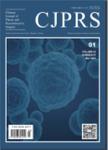Lateral circumflex femoral artery perforator flap for the reconstruction of head soft tissue defects: Cross-region venous anastomosis
作者机构:Department of Burn and Plastic Surgery Affiliated Hospital of Zunyi Medical University Collaborative Innovation Center of Tissue Damage Repair and Regeneration Medicine Zunyi Medical University
出 版 物:《Chinese Journal of Plastic and Reconstructive Surgery》 (中国整形与重建外科(英文))
年 卷 期:2024年第3期
页 面:111-115页
学科分类:1002[医学-临床医学] 100210[医学-外科学(含:普外、骨外、泌尿外、胸心外、神外、整形、烧伤、野战外)] 10[医学]
基 金:supported by the National Natural Science Foundation of China (grant no. 82260392)
摘 要:Background: Owing to its unique characteristics, the lateral circumflex femoral artery perforator(LCFAP) flap is often preferred for repairing head wounds with exposed skulls. However, given the vascular distribution in the head, particularly the veins, can lead to postoperative complications such as venous congestion of the flap. The rates of vascular exploration and necrosis in these flaps are significantly higher than in other body ***, it is crucial to identify a safe and effective method for venous anastomosis of free flaps in the head ***: This retrospective case series study included 10 patients with large head soft tissue defects treated at the Burn and Plastic Surgery Department of the Affiliated Hospital of Zunyi Medical University from January 2020 to December 2022. The head defects were reconstructed using LCFAP flaps, with flap veins anastomosed to the external jugular vein in the neck, either directly or via a bridging ***: Among the 10 adult patients with massive head wound defects, 7(70%) were men. The patients mean age was 53.0 years(48–59 years). The wound defects were caused by trauma in 6(60%) patients and by tumors in4(40%) patients. Postoperatively, no significant complications occurred, and all LCFAP flap survived without ***: The descending branch of the LCFAP flap effectively repairs massive head wound defects. The venous anastomosis method for this flap is associated with a low incidence of venous complications and a high patency rate, making it a clinically valuable reference.



